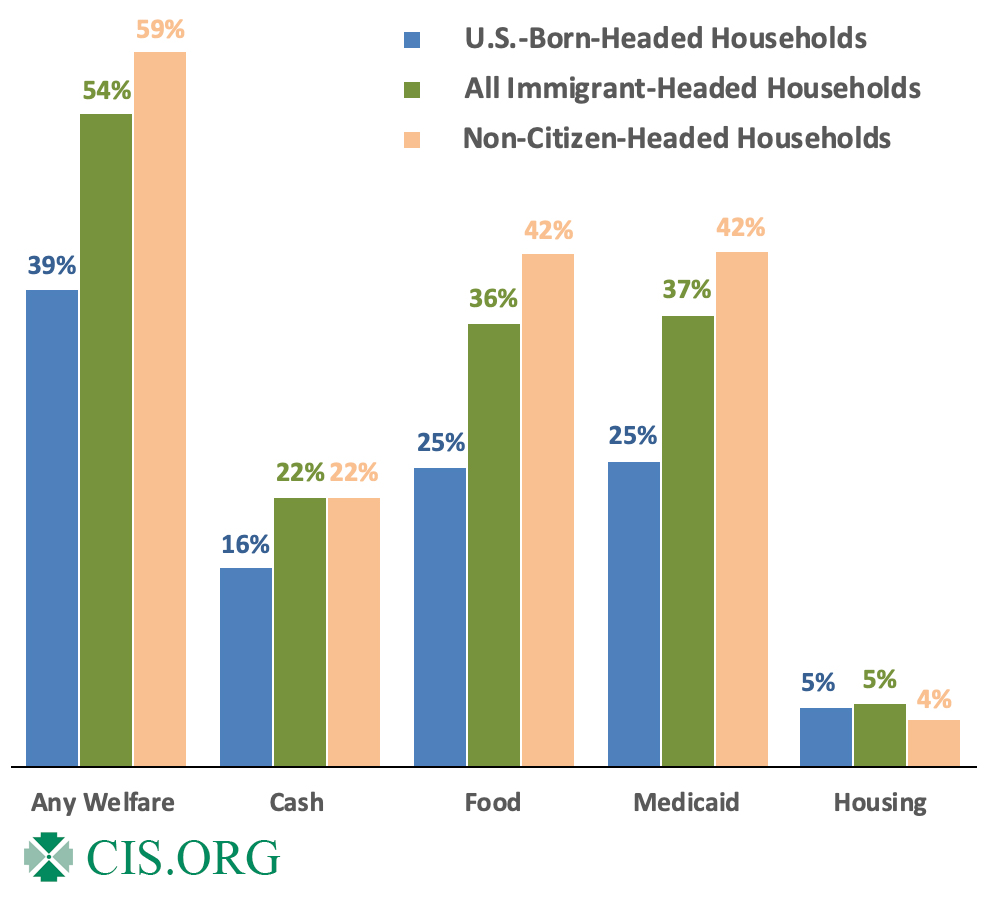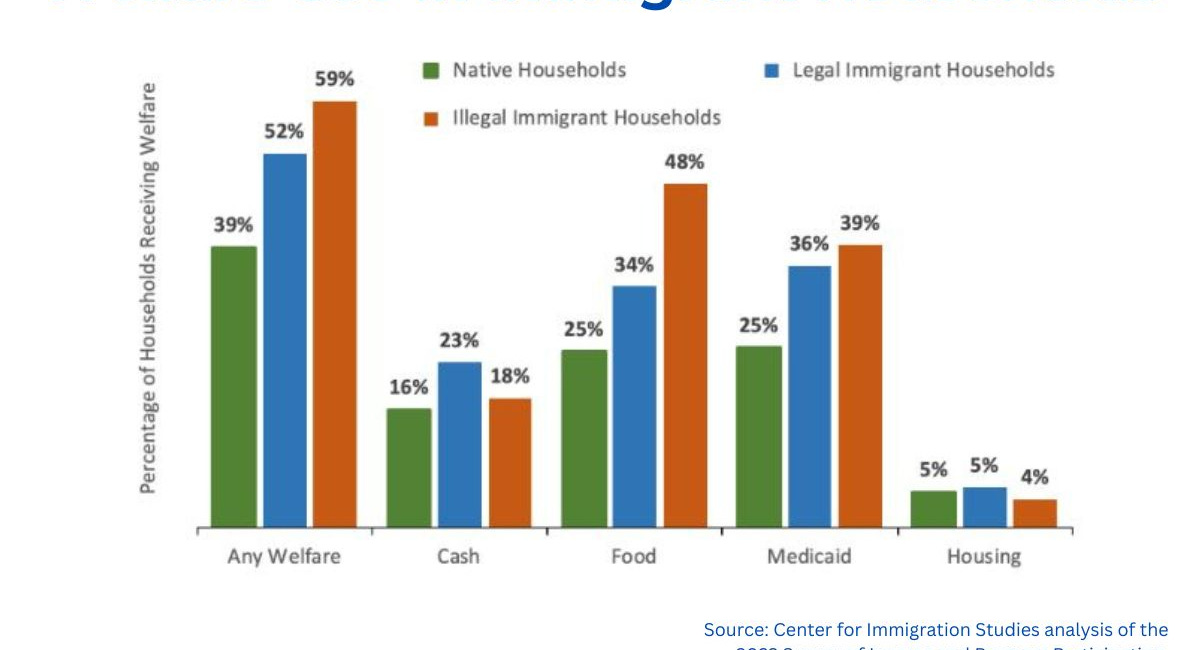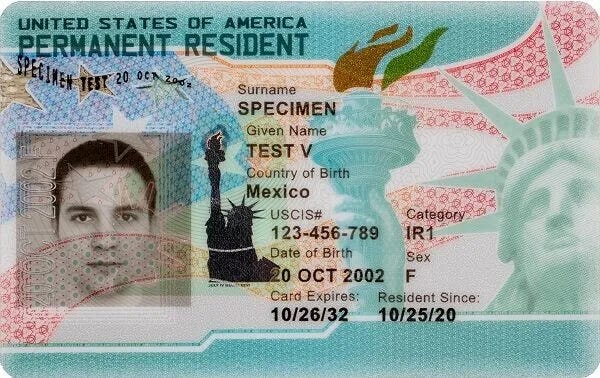By Mike Adams
After wild success in curtailing illegal immigration, such as Supreme Court victories over birthright citizenship and third country deportations, the Trump administration is beginning to signal its intentions for changes to legal immigration, though signaling is certainly not enough. Drawing from campaign promises and executive actions taken in his first term I want to propose a sweeping set of policy measures that could drastically reduce legal immigration numbers. Key areas of focus include an expanded public charge rule (keeping potential immigrants out who would use our welfare state), heightened travel restrictions (a new “Muslim ban”), and tightened green card processes. These changes, if fully realized, could cut legal immigration by hundreds of thousands annually, fundamentally altering the landscape of who is allowed to enter and remain in the United States.
Public Charge Rule: A Real Barrier to Entry
One of the cornerstone policies of the Trump administration’s immigration agenda must be a revival and expansion of the "public charge" rule. Initially reintroduced during Trump’s first term, this rule allows the government to deny visas or Green Cards to immigrants deemed likely to rely on public benefits, such as food stamps, Medicaid, or housing assistance. (The “public charge” doctrine was not invented by Trump—it’s basic to immigration law, and it goes back to Colonial times. Trump’s only innovation is enforcing it.)
If Miller, Trump, Noem, and the rest of the figures were serious about their immigration promises made during the campaign then the administration must reinstate and broaden this policy and reverse several Biden-era rollbacks that narrowed its scope.
It’s worth noting the original success of this rule change in the first term. When this rule was changed in the final 11 months of Trump’s first term it resulted in a near 50% reduction in the number of legal immigrants.
An updated public charge rule could impose stricter income thresholds—potentially requiring immigrants to earn above 250% of the federal poverty line—and expand the list of benefits that trigger a "public charge" designation. Analysts estimate that this alone could exclude up to a third of potential green card holders annually, based on historical income data for immigrant applicants. In other words it could result in up to 350,000 fewer Green Cards being issued each year and radically slow the rate of legal mass immigration into the United States. Combined with enhanced scrutiny of an applicant’s financial self-sufficiency, the rule aims to prioritize wealthier, "merit-based" immigrants, aligning with Trump’s long-standing vision for immigration reform.
White Papers has also argued that many immigration changes must be retroactive. In this spirit any immigrant seeking to renew their Green Card, apply for citizenship, or adjust an extant visa in any way should have their public charge status reviewed. If they are found to be reliant on the American welfare state they should be denied a change in status and ultimately deported. It’s worth reminding readers that a staggering 54% of legal immigrants are reliant upon at least one major program of the American welfare state, or roughly 7 million people.
Travel Restrictions: Expanding the "Muslim Ban"
Travel restrictions are another area where the Trump administration is expected to act swiftly. During his first term, Trump implemented a controversial (to the media at least) travel ban targeting several predominantly Muslim countries—Iran, Libya, Syria, Yemen, Somalia, and later North Korea and Venezuela—citing national security concerns. The Supreme Court upheld a revised version of this ban in 2018.
In May the Trump administration finally issued a proclamation: “Restricting The Entry of Foreign Nationals To Protect The United States From Foreign Terrorists And Other National Security And Public Safety Threats”.
This order restored the travel bans upheld by the Supreme Court and expanded upon it greatly. Travel from Afghanistan, Myanmar, Chad, Congo, Equatorial Guinea, Eritrea, Haiti, Iran, Somalia, Sudan, and Yemen has been curtailed entirely while citizens of Burundi, Cuba, Laos, Sierra Leone, Togo, Turkmenistan, and Venezuela are subject to partial restrictions.
These restrictions are great, but they are not good enough. Most of Africa, Western Asia, the Middle East, South America are filled to the brim with undesirable cultural practices, unstable polities, and moral standards that are at best controversial compared to ours here in the United States. The travel bans need to be expanded drastically if third-world immigration to the United States is to become a thing of the past.
Green Card Changes: Pauses and Stricter Scrutiny
The Trump administration has already taken steps to tighten Green Card eligibility in 2025. Reports from March indicate that U.S. Citizenship and Immigration Services (USCIS) has paused processing for certain Green Card applications, including those filed by approved refugees and asylees, as part of a broader "aggressive vetting" effort. The administration has also begun rolling out new forms, wording, and rules for people applying for a marriage-related Green Card, this is likely a prelude to future restrictions on marriage-based visas though speculation on what that policy may look like is fruitless at the moment.
Refugee admittance remains entirely paused and Conservative advocates are currently pressuring Trump to end the 50,000 per annum “diversity” lottery that has long been used under the justification that America must “look like the world”. Why we shouldn’t look like America remains a mystery to me.
Impact on Legal Immigration Numbers
If the administration were to take its campaign promises seriously and implement these changes the cumulative effect of these policies could significantly cut legal immigration totals. During Biden’s administration the US admitted roughly 2 million legal immigrants each year, including Green Card holders, H-1Bs, refugees, and asylees. Estimates based on Trump’s first-term outcomes and current proposals suggest a potential reduction of 300,000 to 500,000 legal immigrants per year. The public charge rule alone could bar 200,000-300,000 applicants, while travel restrictions and green card limitations might exclude another 100,000-200,000. Ending programs like the Diversity Visa Lottery and reducing refugee admissions could account for an additional 50,000-100,000 drop.
From there Congress will have to act to reduce the number of visas made available each year in a broad range of categories, but the executive could and should begin to make cuts where possible to protect the American nation and American worker.
Support our mission to take on more writers and contributors:
Zelle: whitepapersinstitute@protonmail.com
Buy us a coffee: https://www.buymeacoffee.com/wppi
Linktree: https://linktr.ee/wppi
Snail Mail: White Papers Policy, PO Box 192, Hancock, MD 21750S








A great article. All seem to me to be "common sense" but I also realize that is in short supply and usually not even applicable in the U.S. Hopefully the administration will be pushed by the right people to implement what is pretty much the law anyway. I like the illegal culling (and scaring?) but have also said we need to keep our eye on the legal side also...from what I have seen with my own eyes quite a few undesirables on that end as well.